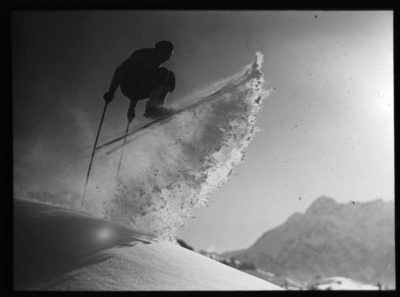During the turbulent times sparked by the Covid-19 pandemic, artist Mathias Kessler decided to move back to his home country Austria after living and working in New York City for nearly 25 years. Coming back to the town he grew up in, Kessler instantly noticed the eerie atmosphere controlling the region. The village, formerly a rural town dominated by tradition, evolved into a popular ski destination for people from all around Europe. But since spring 2020, the ski slopes and cabins are void of any masses. On hiking trips, Kessler recorded that instead of snow turbines or hideous apres-ski music he was suddenly hearing different kinds of animals and the noise of rushing rivers. The way he experienced the landscape in those months was utterly opposed to his experience as a child. This led Kessler to engage with his own past and the past of his ancestor, his grandfather Karl Max Kessler.
What connected Kessler and his grandfather the most was the passion for photography. Much like his grandchild, Karl Max Kessler took pictures in the montane landscape of the Kleinwalsertal throughout the twentieth century, accumulating thousands of negatives and postcards depicting residents, nature and local traditions. Untouched for over 30 years, Kessler resolved to revive his grandfather‘s archive, which he found in a rather derelict state. Thus, one year later Kessler founded an association to restore and properly preserve the culturally substantial legacy of his grandfather.
Studying the negatives, Kessler not only realized that the experienced landscape changed when the whole infrastructure was put on hold, but that there was also a significant transformation happening during the twentieth century. The valley underwent an economical change from earning money mainly with democratic farming to capitalize on their mountains by creating touristic ski resorts. This economic sector was promoted by those very pictures showing beautiful ski slopes and snowy landscapes, so much as to further the natural destruction of the valley. The revitalization of the archive, therefore, not only wants to restore the negatives but also look at them from a critical stance. Embedding the pictures in their historical context should point to the relationship between nature and culture and their photographic reproduction. Furthermore, the preservation aims to prevent the total oblivion of hundred-years old traditions of the valley.
